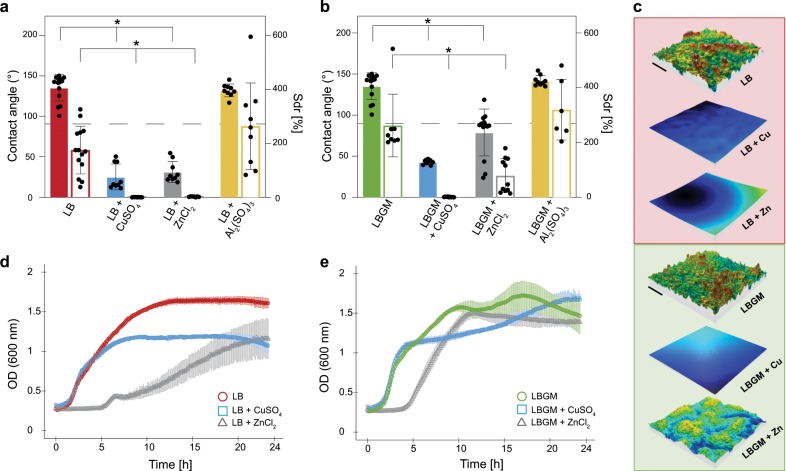Fig. 1. Effect of metal ions on B. subtilis NCIB 3610 biofilms surface wetting and topography, and impact on growth kinetics of planktonic bacteria.
a, b Contact angle (solid bars) and Sdr (empty bars) values of biofilms cultivated on LB (a) and LBGM (b) agar with and without one of the following metal ions: CuSO4 (1.5 mM), ZnCl2 (0.5 mM), or Al2(SO4)3 (1.5 mM). The dashed lines separates hydrophilic (<90°) from hydrophobic (>90°) behavior. Asterisks denote statistically significant differences as assessed by a one-way ANOVA or Welch’s ANOVA using p = 0.05 (see Methods). c Profilometric images of biofilms grown at standard and metal ions enriched conditions, the scale bar denotes 0.2 mm in x and y; the z scale is max. 110 μm for LB samples (red background denoting rose-like wetting behavior in standard conditions) and 150 µm for LBGM samples (green background denoting lotus-like wetting behavior in standard conditions). d, e OD600 values are determined for planktonic bacteria grown in LB (d) and LBGM (e) liquid media over time, both at standard and metal ions enriched conditions. Error bars denote the standard deviation (s.d.), which was determined as follows: a, b from at least 6 individual data points, obtained from a minimum of 3 growth batches with a minimum of 2 biological replicates, and 1 technical replicate each (B ≥ 3, N ≥ 2, n = 1); d, e from at least 12 individual data points, obtained from a minimum of 3 growth batches with 1 biological replicate, and a minimum of 4 technical replicates each (B ≥ 3, N ≥ 1, n ≥ 4).

